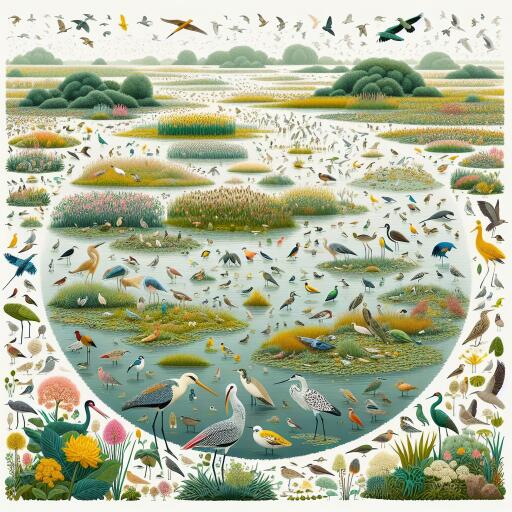
Fewer Migratory Birds Visit Sultanpur Wetland: Asian Waterbird Census Report
The annual Asian Waterbird Census indicates a decline in the number of migratory birds visiting the Sultanpur National Park. This observation reflects the broader repercussions of global climate change and the deterioration of wetland ecosystems, which in turn have influenced the patterns of avian migration.
According to the Asian Waterbird Census of 2025, Sultanpur National Park hosted 2,593 migratory birds spanning 48 species. In comparison, the census of 2024 recorded 2,686 birds across 43 species, whereas the 2023 figures were significantly higher with 9,026 birds across 51 species. This year’s survey was conducted starting at 11:00 AM on a Saturday and wrapped up later in the evening.
Recognized under the Ramsar Convention for its importance, Sultanpur Park underwent this annual survey under the supervision of Dr. TK Roy, an ecologist and ornithologist. Dr. Roy, accompanied by birders and experts from notable organizations, led the efforts to gather accurate data on the park’s avian inhabitants.
Dr. Roy highlighted factors such as delayed monsoon patterns and the late onset of winter as significant contributors to the diminished water levels at the park, which are crucial for the birds. Comparing the current data to the figures from 2024, a slight increase in the diversity of bird species was observed, although the total population of birds saw a decrease.
Significant reductions in numbers were observed in several migratory species. For instance, the Northern Pintail population dropped from 146 in 2024 to 115 in 2025. Meanwhile, the Bar-headed Geese, absent in previous counts, appeared with a count of 67 individuals this year. On a concerning note, the resident Painted Stork experienced a steep decline, with only 206 individuals counted this year versus 467 in the last census. Conversely, some species such as the Eurasian Spoonbill showed improvement, with their numbers rising from 14 in 2024 to 70 in this year.
Dr. Roy stressed the critical need for immediate conservation efforts aimed at preserving wetland habitats to counteract these alarming trends. The figures reveal not only the pressures of climate change but also the impacts of human activities on these ecosystems. He emphasized the importance of Sultanpur Wetlands in sustaining biodiversity, urging for swift actions to safeguard these crucial habitats and their avian populations.





Leave a Reply